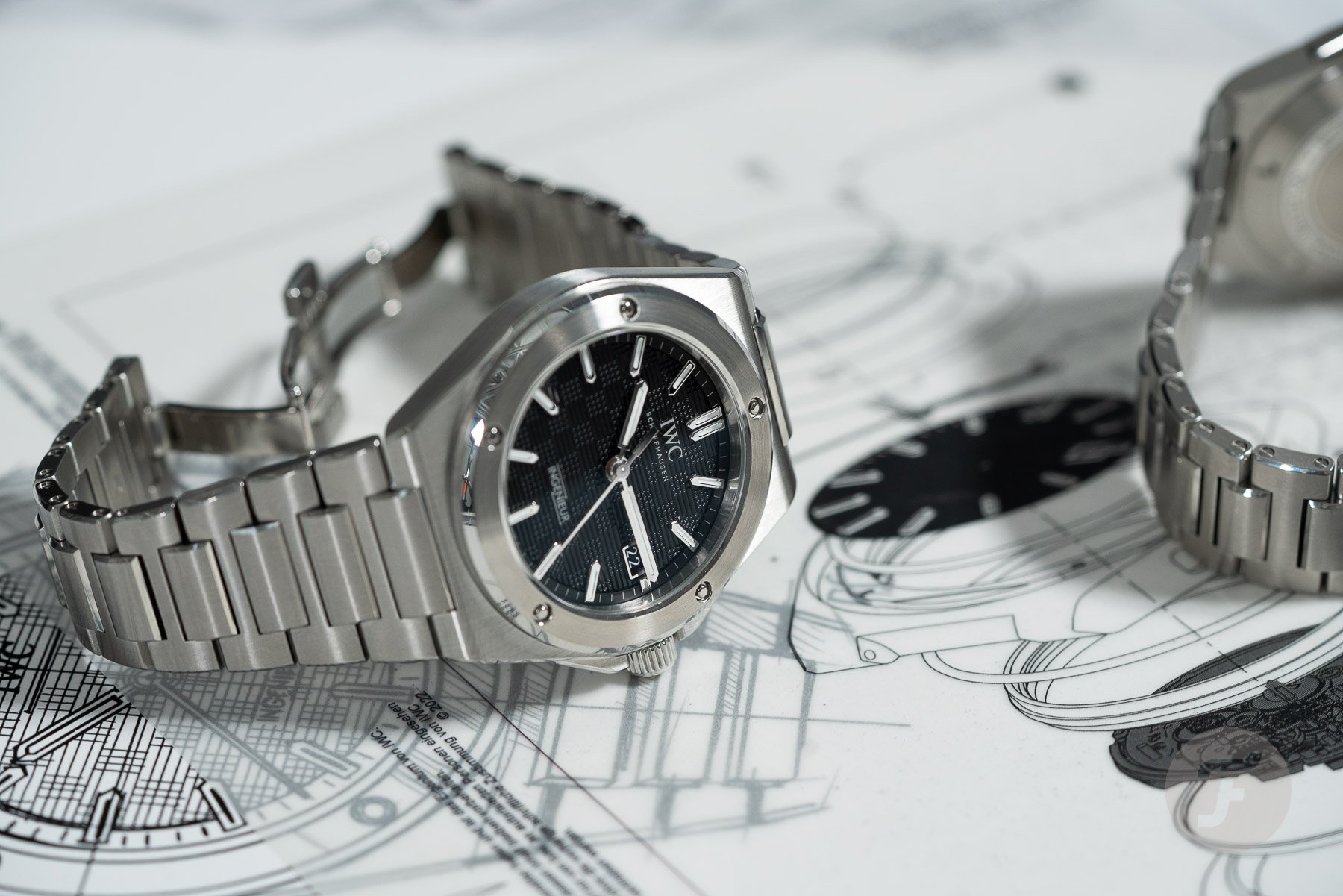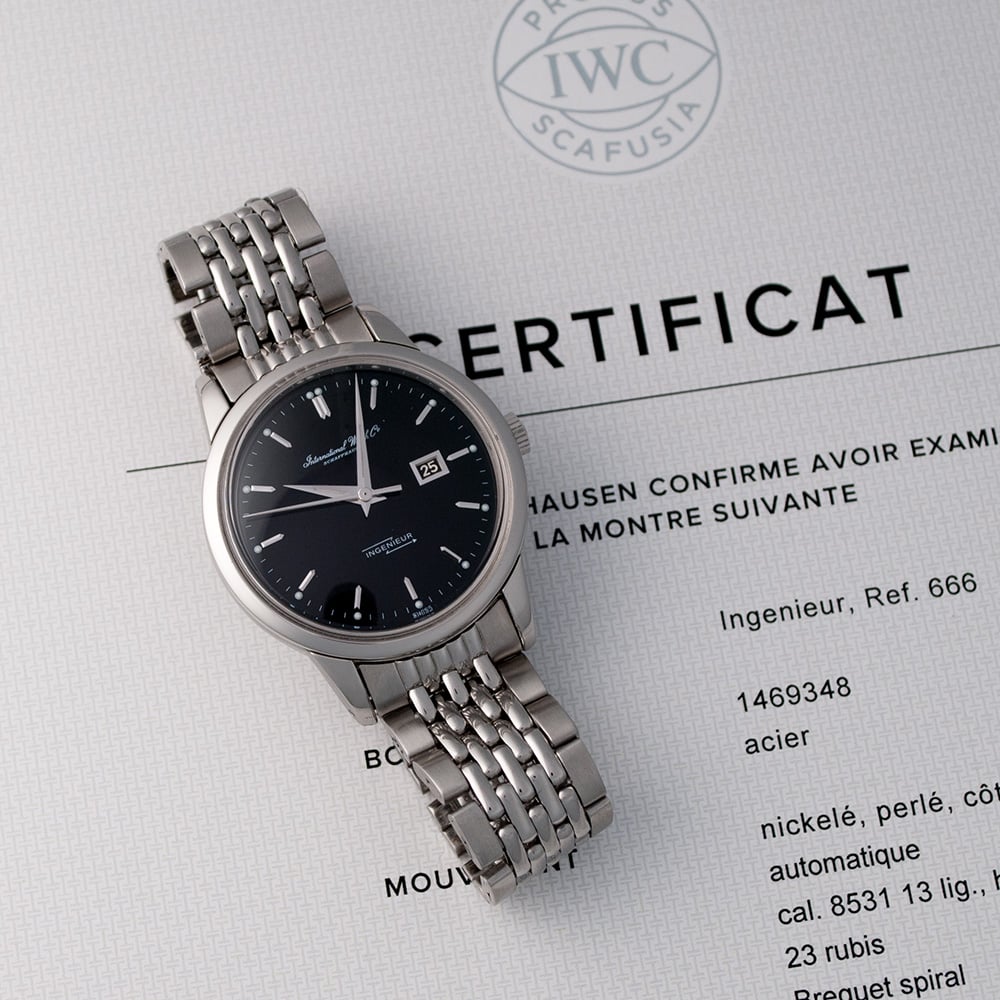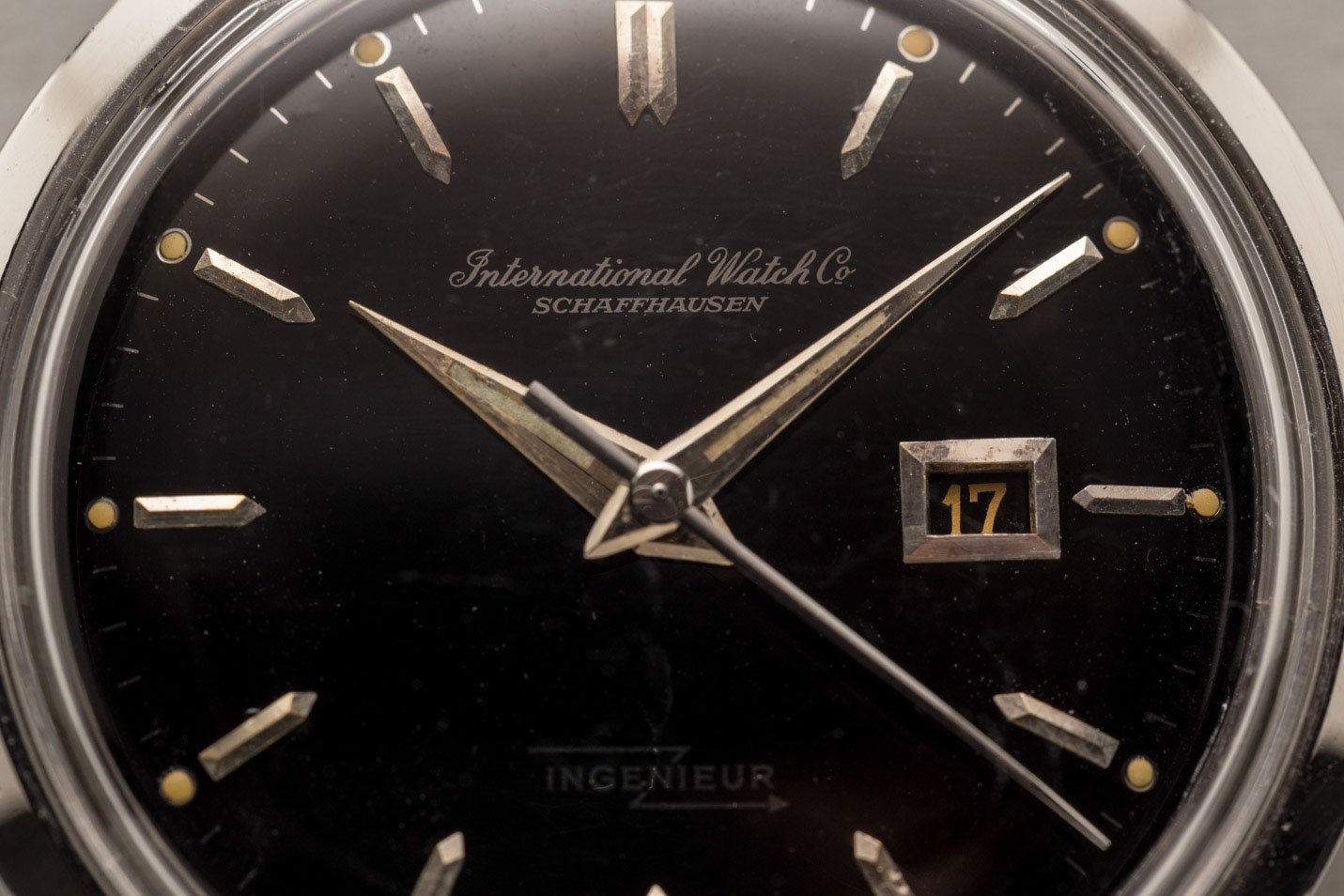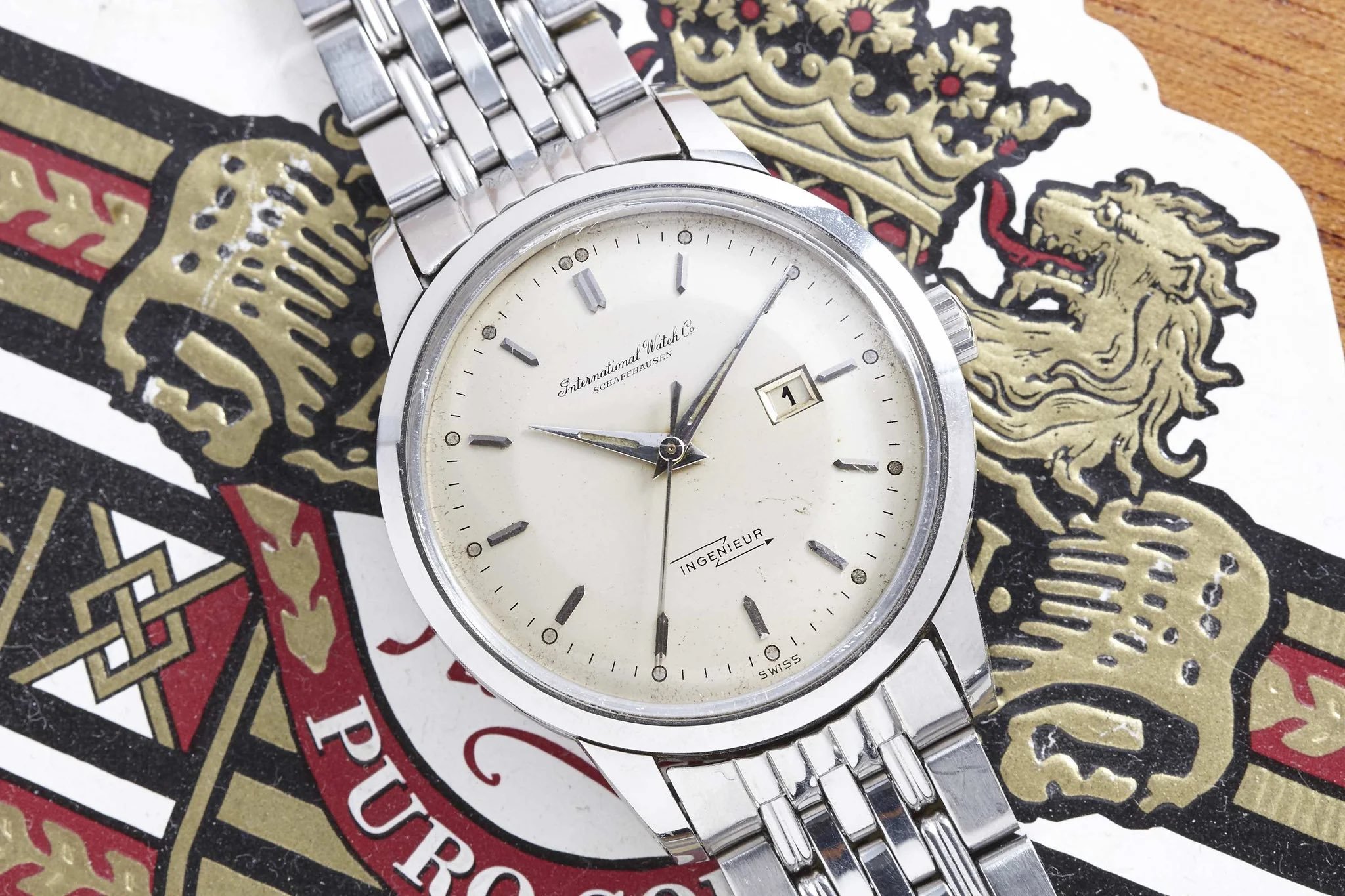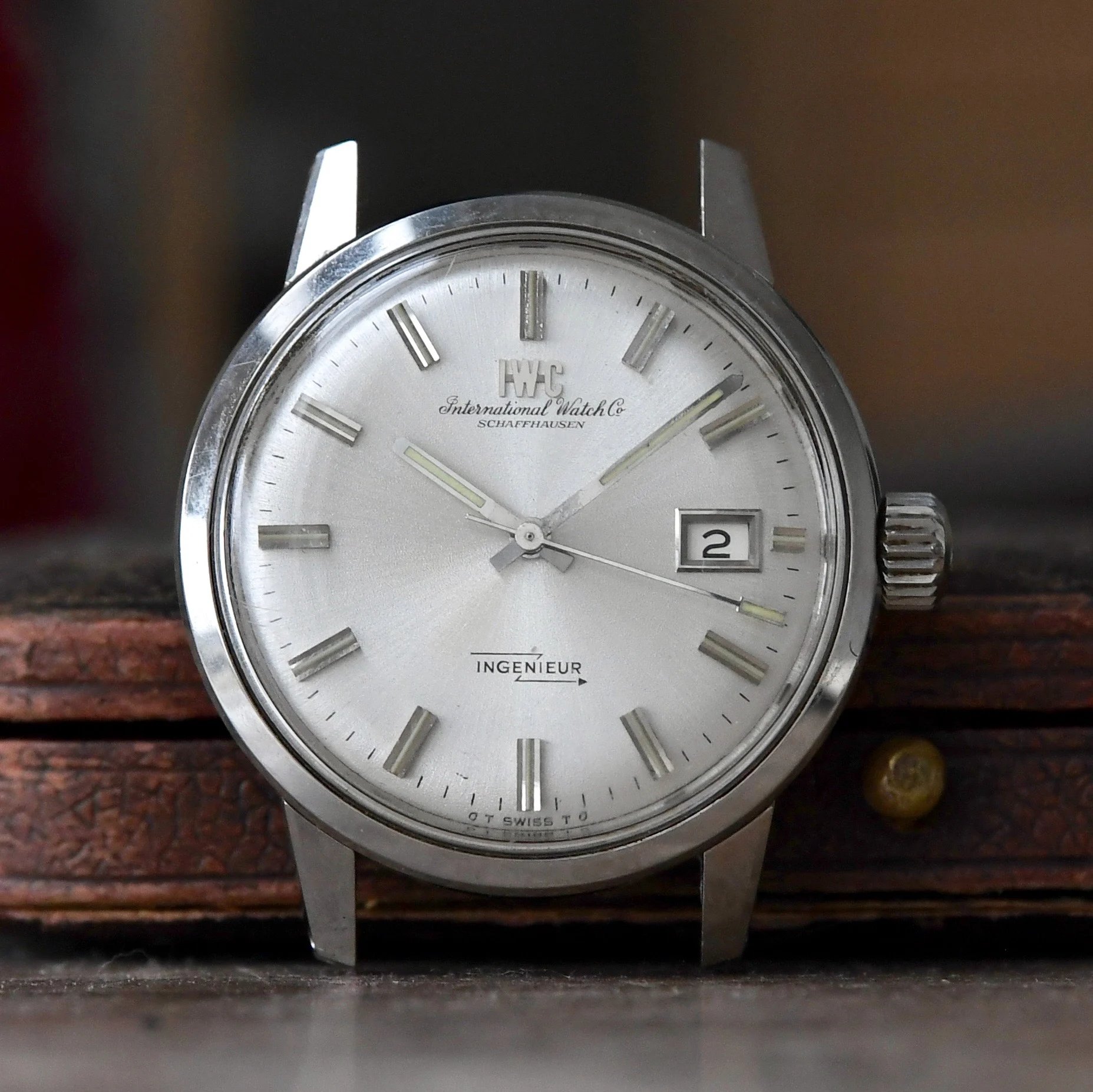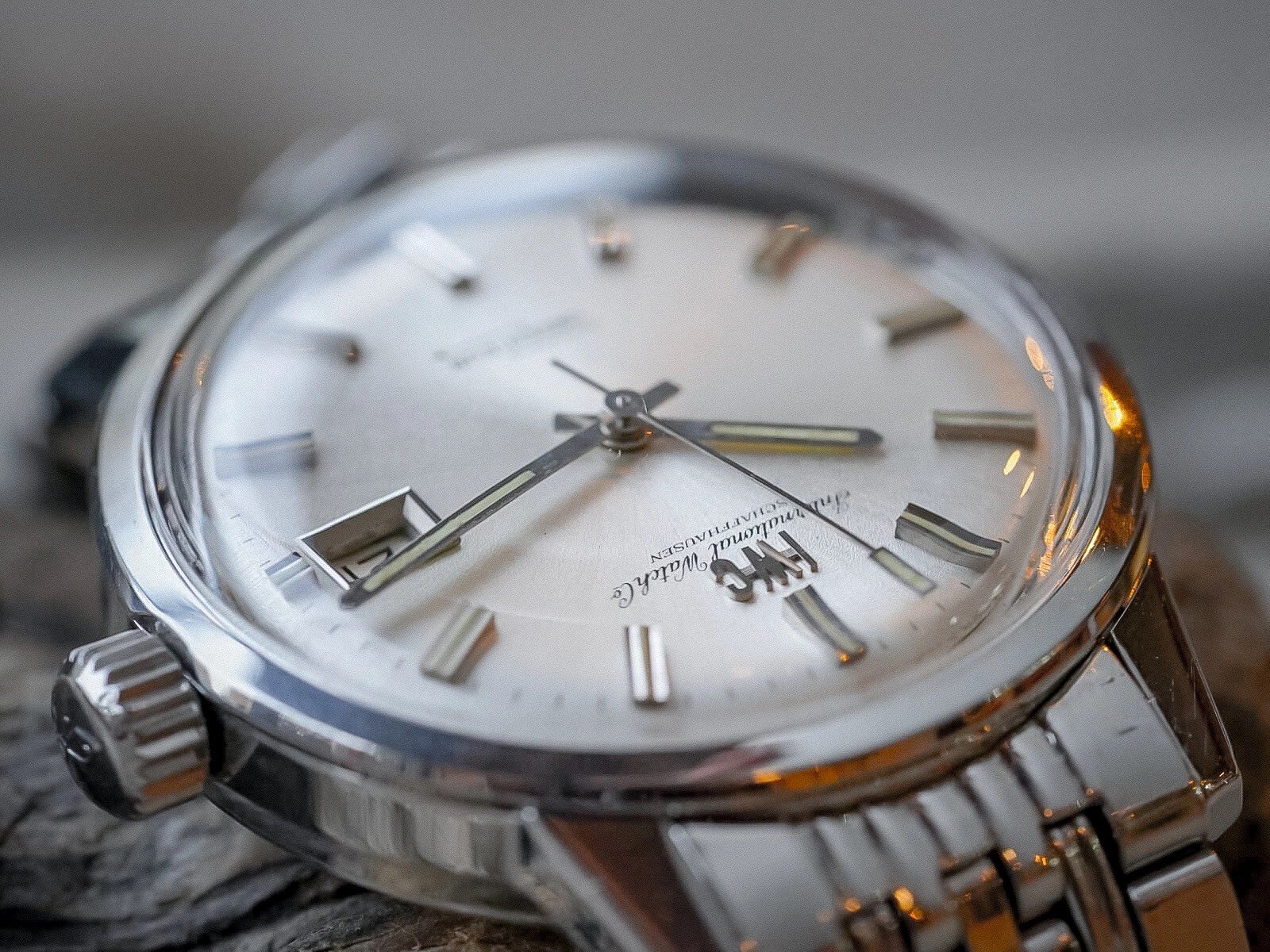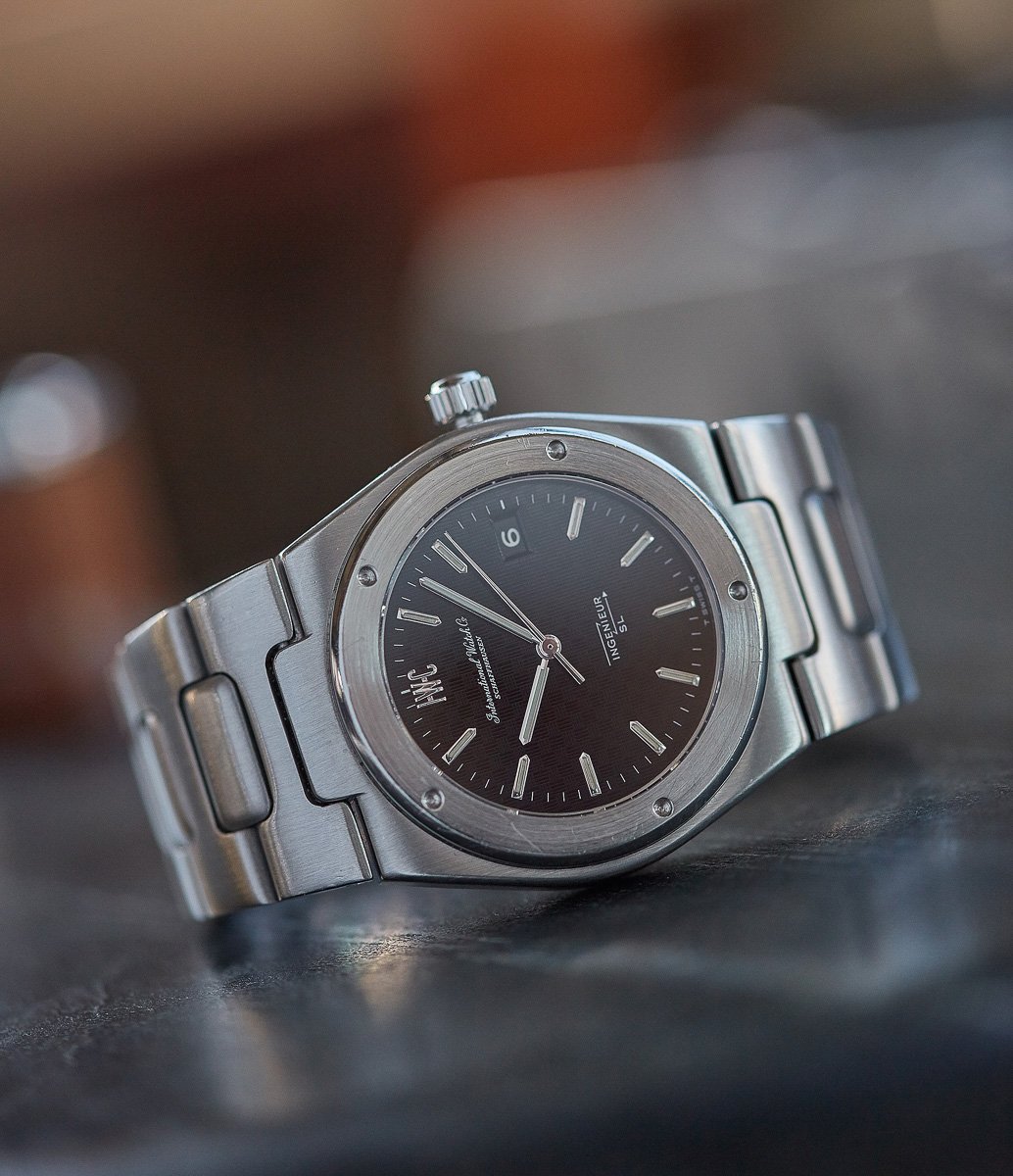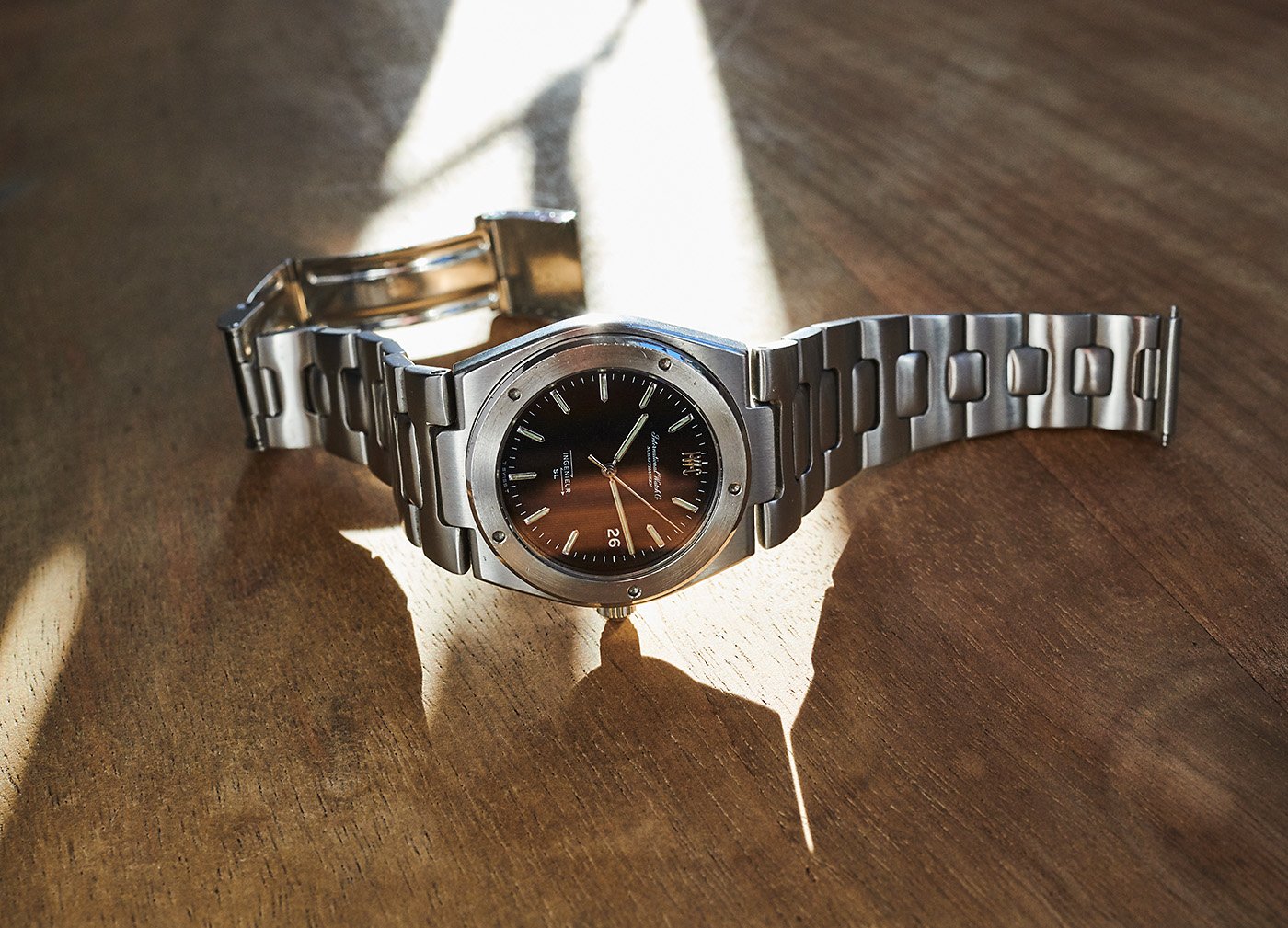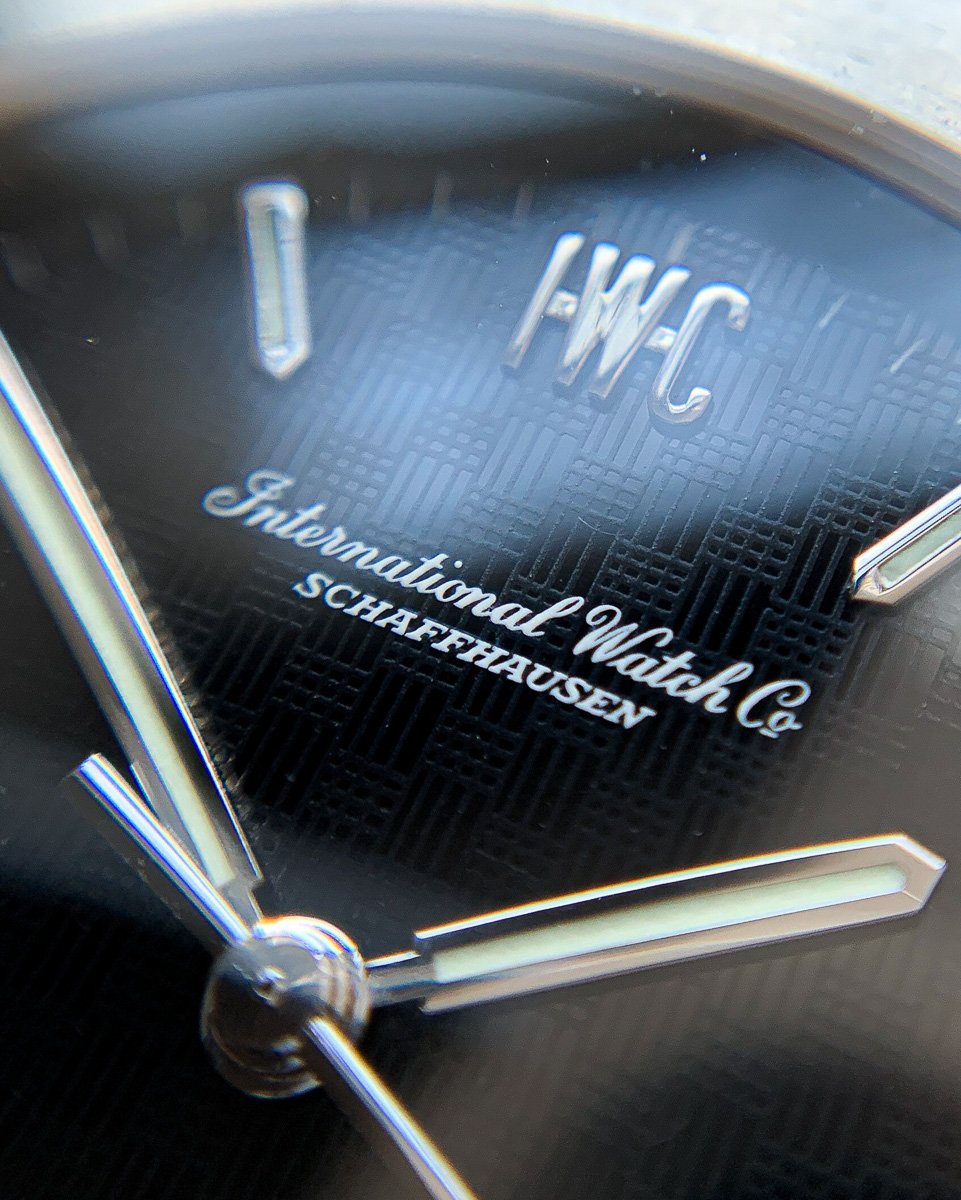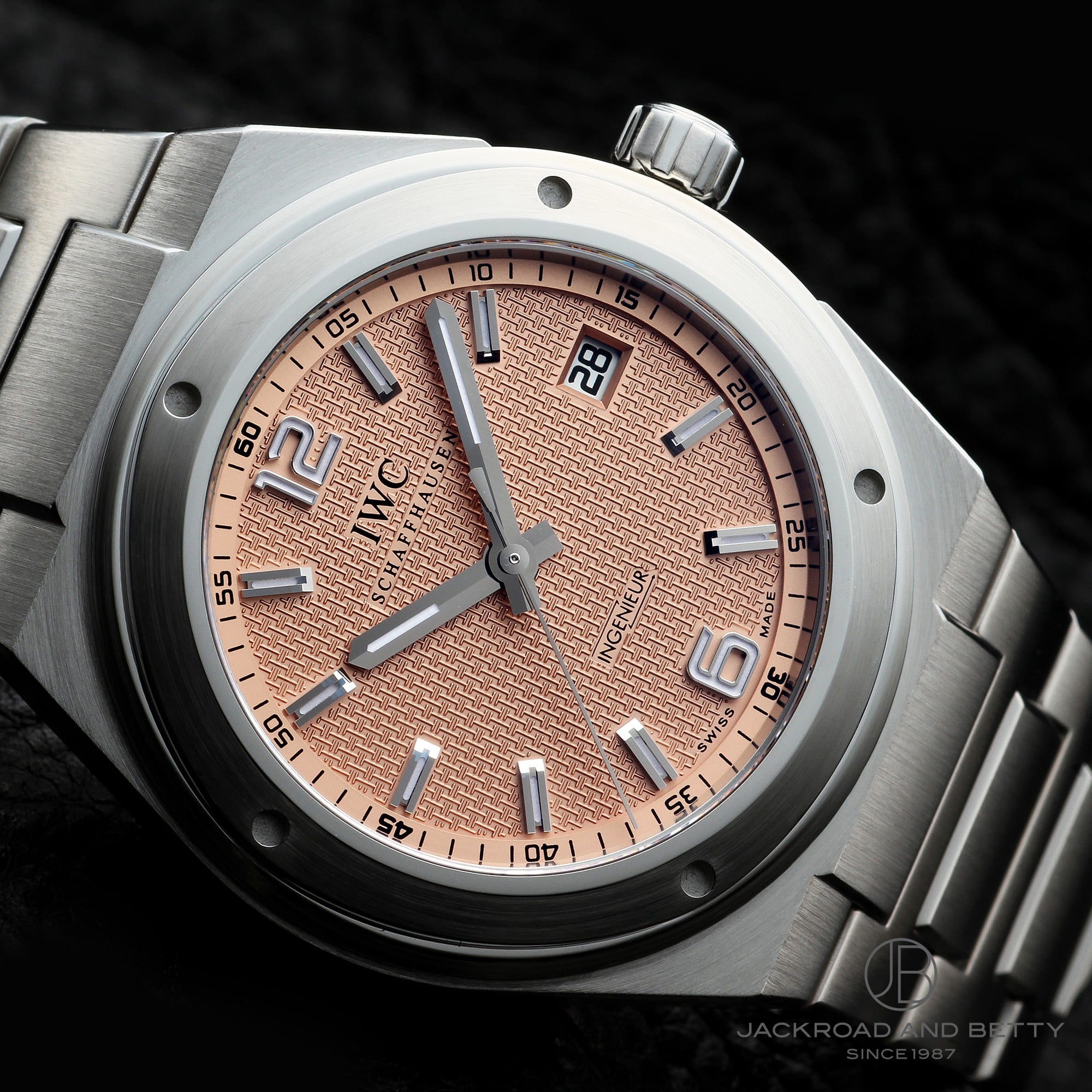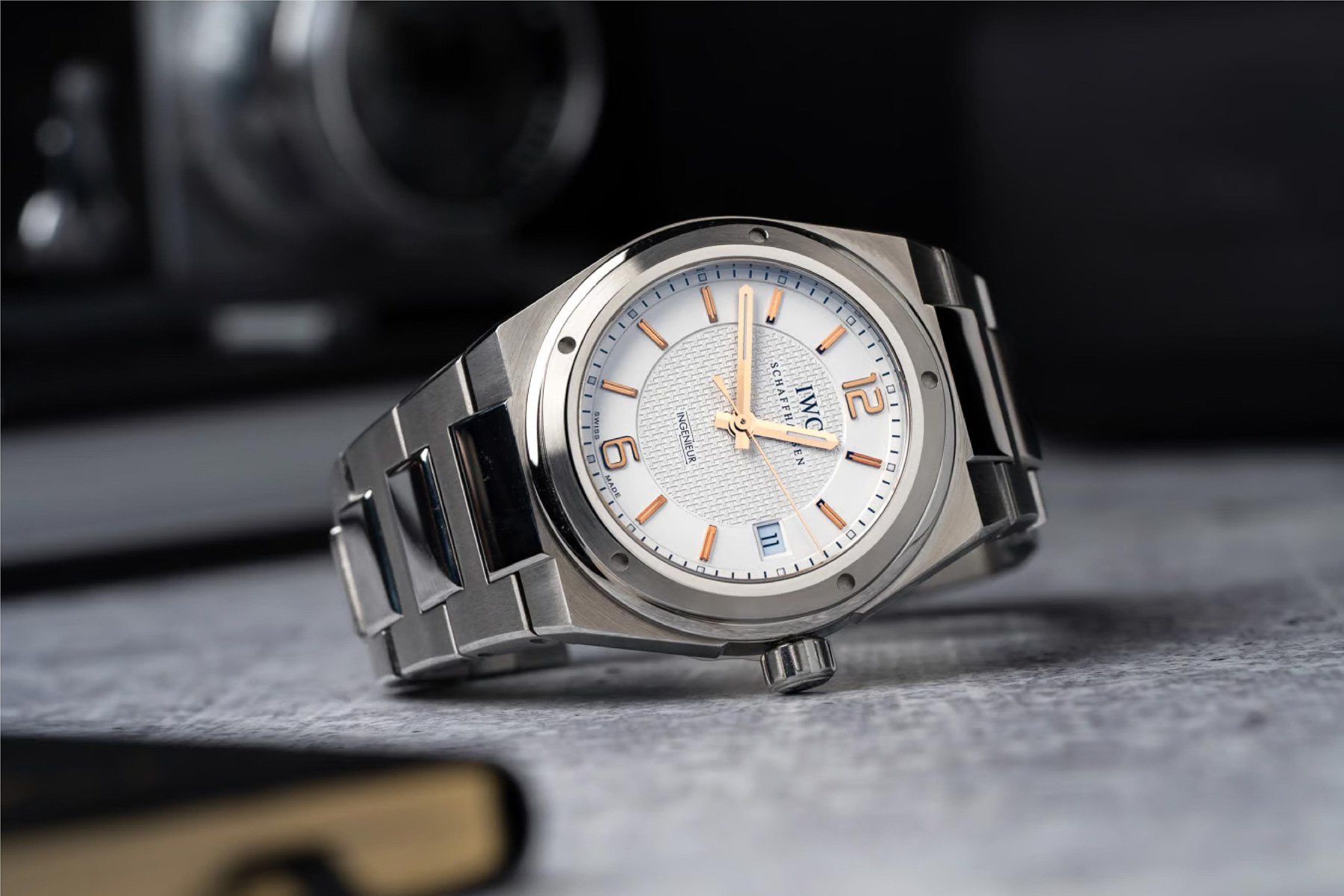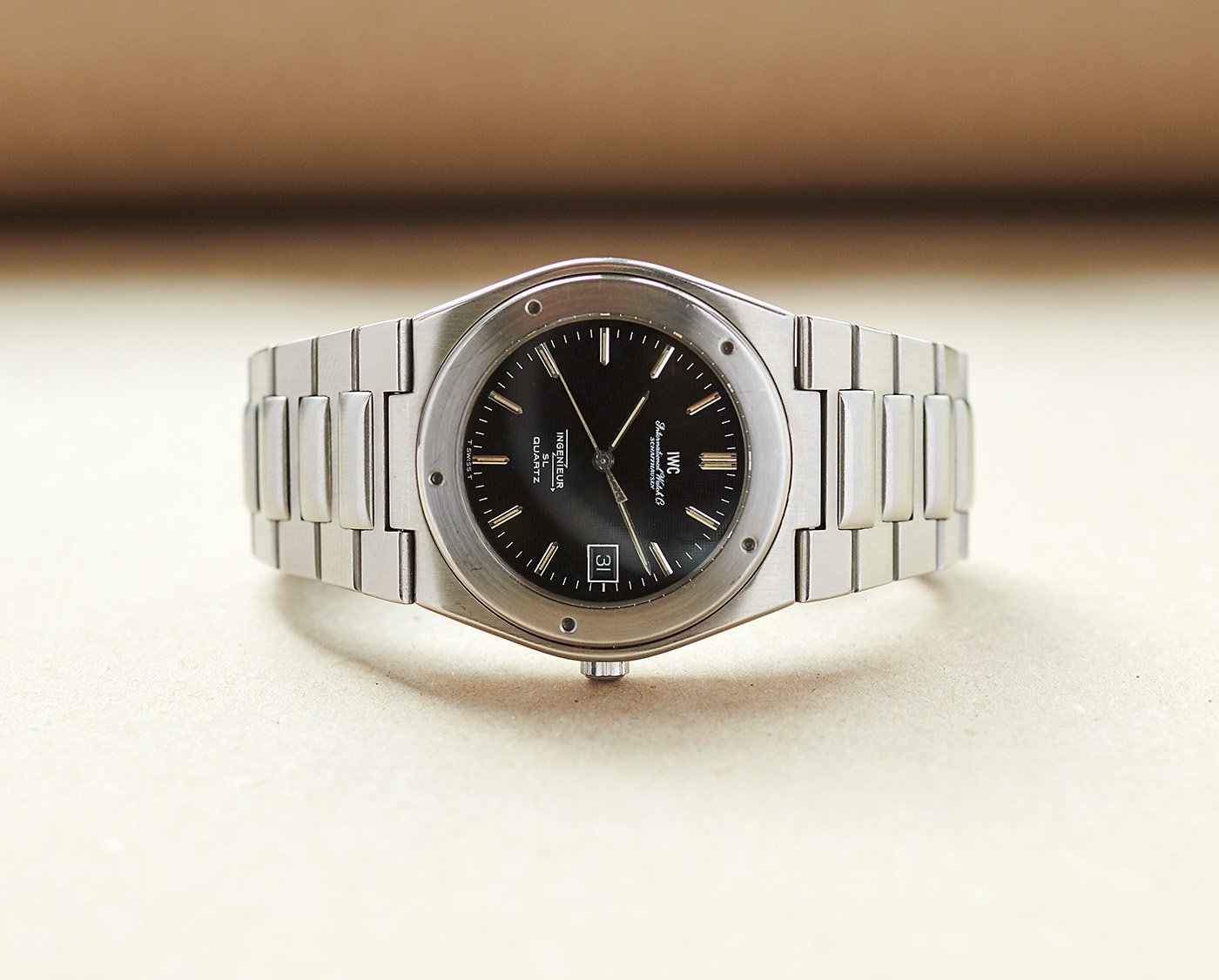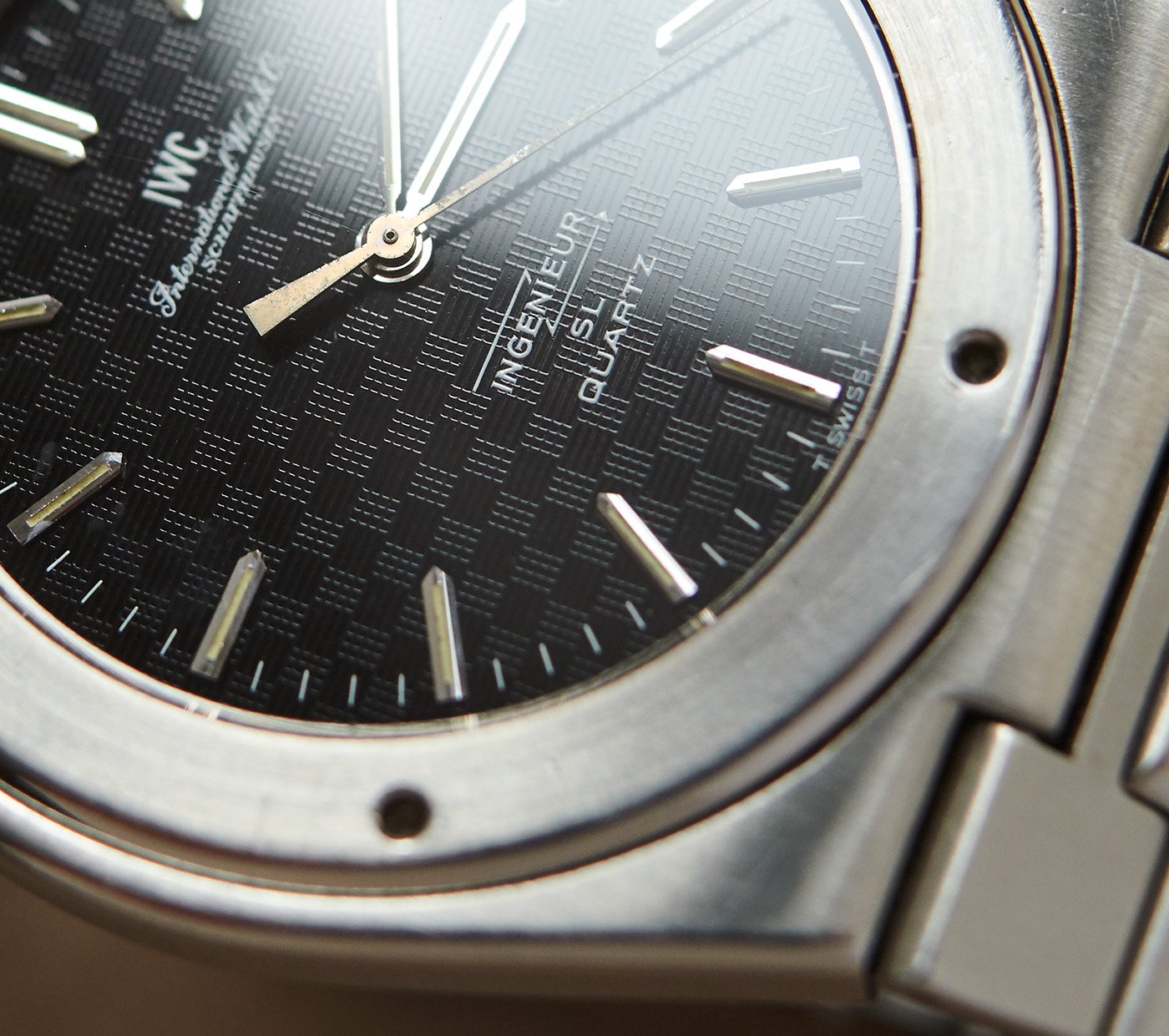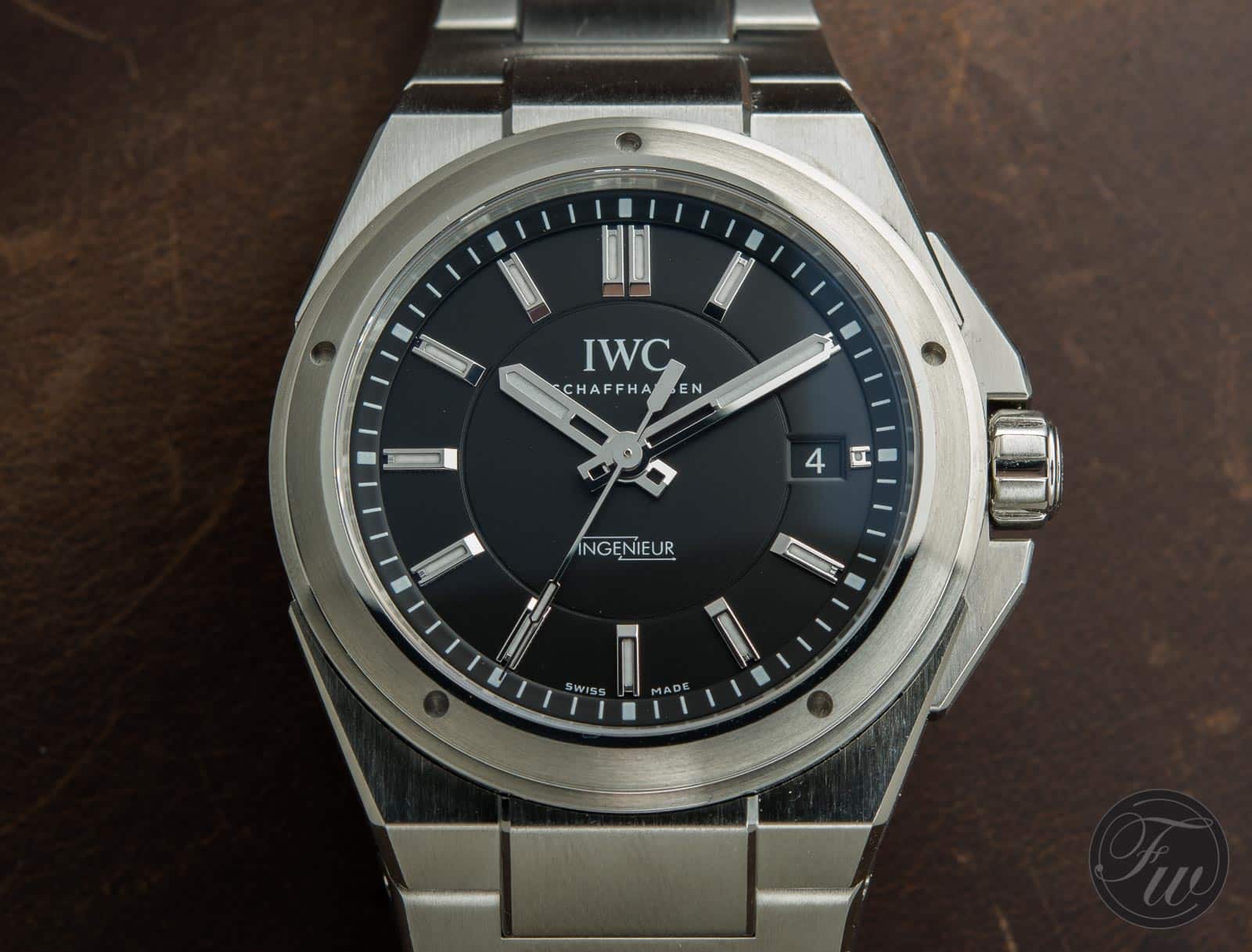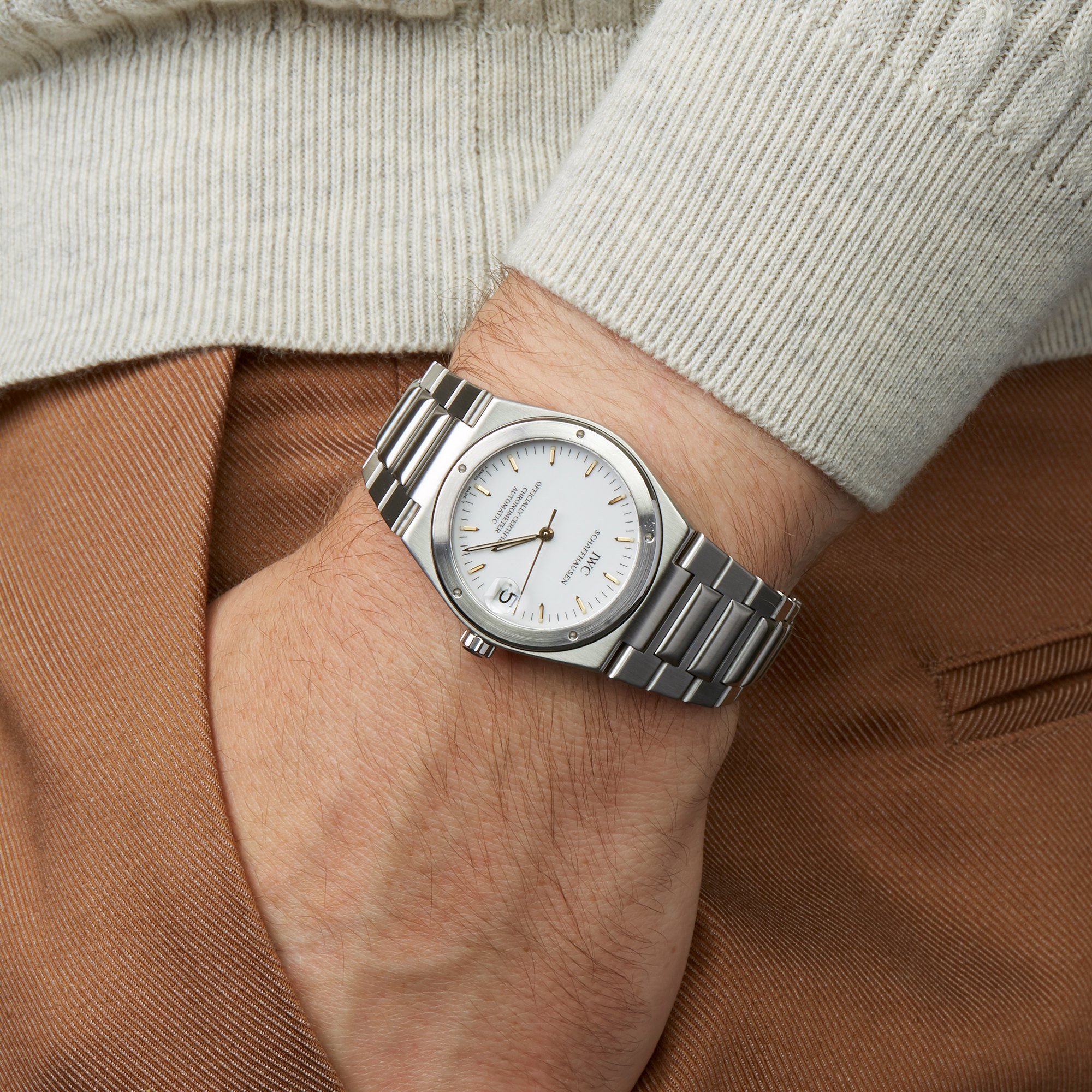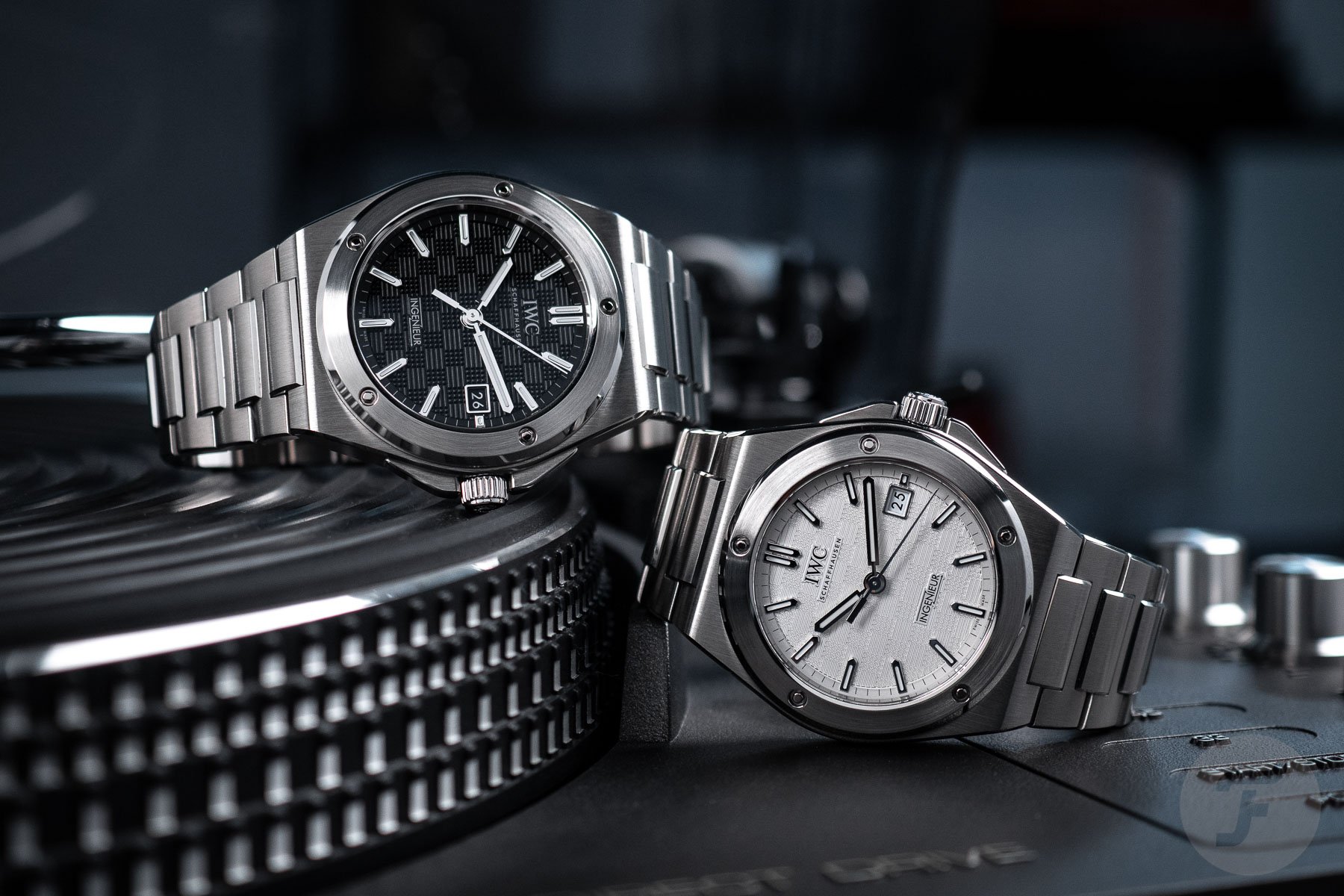Fratello’s Top 5 IWC Ingenieur References Ever Produced
Another Friday, another Top 5! In this series, we take one classic watch and choose our five favorite references ever produced. Four of these references will be based on the historical importance of the specific watch in the grand scheme of things. Though there may be some overlap, it’s not a question of which references are the most collectible or of the highest value on the market. The fifth pick is our Fratello favorite that considers the current market price and collectability, potentially making it a sleeper reference. As such, the last pick could be described as our wild card. This week, we’ll look at the IWC Ingenieur’s history. What came before Genta’s Ingenieur, and what came after? These are our five favorite IWC Ingenieurs.
IWC’s main attraction for 2023 is the return of the Ingenieur modeled after the Gérald Genta-designed Ingenieur SL “Jumbo” ref. 1832. That watch was introduced in 1976 and is part of Genta’s famous Royal Oak, Nautilus, and Ingenieur trilogy. For many fans, this year marks the long-awaited revival of a classic, a watch that should have always been part of the IWC collection. But the history of the Ingenieur goes back a lot further than Genta’s version of IWC’s engineer watch. The legacy started back in 1954 when the Schaffhausen brand introduced the first Ingenieur.
The concept of an engineer’s watch
IWC’s Ingenieur was simple in its concept but groundbreaking in its execution. The engineer’s watch was developed by Albert Pellaton for scientific, technical, and exploration purposes. The main features necessary were precision timekeeping, antimagnetic properties, and substantial water resistance. While such a watch was perfect for scientists, engineers, and explorers, essentially, it could be a great daily watch that anyone could wear without having to worry that it would break. It started a great legacy of well-designed watches that have become much-loved among watch collectors. But which are the five best references ever produced? In all honesty, it’s hard to pick just five. IWC produced such an abundance of great models that they could easily lead to a list of ten. But as we only have five spots, we went for our absolute favorites. Let’s check them out.
IWC Ingenieur ref. 666A/AD
As usual, we’ll start our list with the very first reference, the IWC Ingenieur 666. The famous Albert Pellaton, who developed the Pellaton Winding System, started working on the first Ingenieur in the early 1950s to create an everyday watch for engineers. As such, it needed to be a perfect daily wearer with a set of specs that could handle the challenges that engineers faced. It resulted in the first Ingenieur ref. 666, which debuted in 1955. The watch featured a 36.5mm case that was 13.2mm thick. It was based on the case that IWC used for its famous Mark XI. The substantial thickness was mainly caused by the Faraday cage inside the case. This soft iron cage protected the movement against magnetic fields up to 80,000 amperes per meter. On top of that, the watch was water resistant to 100 meters.
The first model had two different references. The first was the no-date ref. 666A, and the other was the ref. 666AD with a date. The dateless version came with IWC caliber 852, and the version with a date was powered by caliber 8521. Both these movements operated at 19,800vph, had a 42-hour power reserve, and featured the Pellaton winding system. The watches came with either a black or white silvered dial and a set of luminescent dauphine hands. Several dials from the first series (1955–1959) featured numerals at 12 and 6 o’clock. But there were versions without the numerals too, as well as ones with numerals at 3, 6, 9, and 12 o’clock. The steel models came with either a leather strap or a steel bracelet. The 18K gold version on a leather strap looks super classy.
An improved version of the ref. 666
The next iteration of the ref. 666 was introduced in 1959 and used an updated movement. The new versions had the same case as the first version, but inside, IWC equipped them with the updated caliber 853 for the no-date version and caliber 8531 for the version with a date. This version of the Ingenieur stayed in production until 1967 when it was replaced by the new IWC Ingenieur ref. 866. In those eight years, IWC produced different variations of the ref. 666 with a black or silver dial. As was usual in that era, there were quite a few different executions of the dials, so you’ll see versions with pie-pan dials as well as ones with different markers. What is always present, however, is the great style of this classic IWC Ingenieur.
IWC Ingenieur ref. 866A/AD
In 1967, IWC introduced the new Ingenieur ref. 866, which replaced the ref. 666. This new model had a slightly bigger 37mm case with increased water resistance to 120 meters. It featured new hands and came with new indices as well. Once again, IWC offered the stainless steel model on a leather strap or a stainless steel bracelet. And if you ask me, you should always try and get these vintage Ingenieurs on the bracelet because they look stunning. The gold model came on a leather strap only. IWC offered the ref. 866 with a wider variety of dial colors. The silver and black dial remained on offer, and IWC added a blue and gilt dial. In another slight change compared to their predecessors, all of the new models featured sunray dials for some extra style. Once again, there are variations with different indices as well.
A notable difference was the script IWC logo of the first models versus the later applied IWC lettering combined with the script logo. I love seeing the latter versions for their great style. Besides a different case, the biggest change was a new movement. IWC equipped the ref. 866A with its caliber 854 from 1967 until 1970. From 1970 until 1976, the brand used the slightly improved caliber 854B. The ref. 866AD came with the caliber 8541 at first and the updated caliber 8541B later. What remained, however, was that recognizable design. The Ingenieur ref. 866 is a favorite among collectors because it is the most evolved version of the first Ingenieur. It is also the inspiration for IWC’s previous-generation Ingenieur, which was discontinued following the introduction of the new Genta-inspired version. The ref. 866 is a great classic that goes for roughly €6.5K to €14K.
IWC Ingenieur SL “Jumbo” ref. 1832
Our third spot is reserved for the famous IWC Ingenieur SL “Jumbo ref. 1832. This Genta-designed icon marked a big change in the history of the Ingenieur. Gérald Genta abandoned the classic looks of the models that came before and introduced a completely new sporty look. As we all know, alongside the Royal Oak and the Nautilus, it is part of his famous trilogy of modern sports watches with integrated bracelets. I have explained before that what I adore about Genta’s trilogy is the exploration of shapes, from octagonal with the Royal Oak to square with the Nautilus and round with the Ingenieur. Because of its most traditional shape, the Ingenieur is also the least exciting of the three. But in 1976, this silhouette was still very new and exceptional.
Genta kept the important details in mind when designing the new Ingenieur. So the lightning bolt logo is still there, and he also had to design a case with antimagnetic properties. Thus, he wasn’t able to design a slim profile. But as it was an engineer’s watch, he had to work with the story that was already in place, and he did so to tremendous effect. The new Ingenieur featured a 40mm stainless steel case that was just over 12mm thick with an integrated bracelet. For the dial, Genta came up with a graph-paper-like texture that referenced the engineer’s character of the watch playfully and subtly. The IWC logo sat at 12 o’clock and served as a proud hour marker. This is something we saw Genta do with the Royal Oak as well.
The magic is in the sum of its parts
IWC equipped the watch with the antimagnetic self-winding caliber 8541ES. It featured a Pellaton winding mechanism and came with a date indicator at 3 o’clock. The movement was placed inside a Faraday cage to protect it from magnetic forces up to roughly 1,000 gauss. The caliber operated at 19,800vph and had a 40-hour power reserve and an antimagnetic escapement. For most of us, including me, this is the quintessential Ingenieur. It was the perfect next step in the evolution of IWC’s engineer watch. I wrote about the watch last year, asking for a return of this classic. In the article, I also explained my personal connection to the watch. It makes this watch a very special watch for me. Expect to see prices between €25K and €40K for this classic.
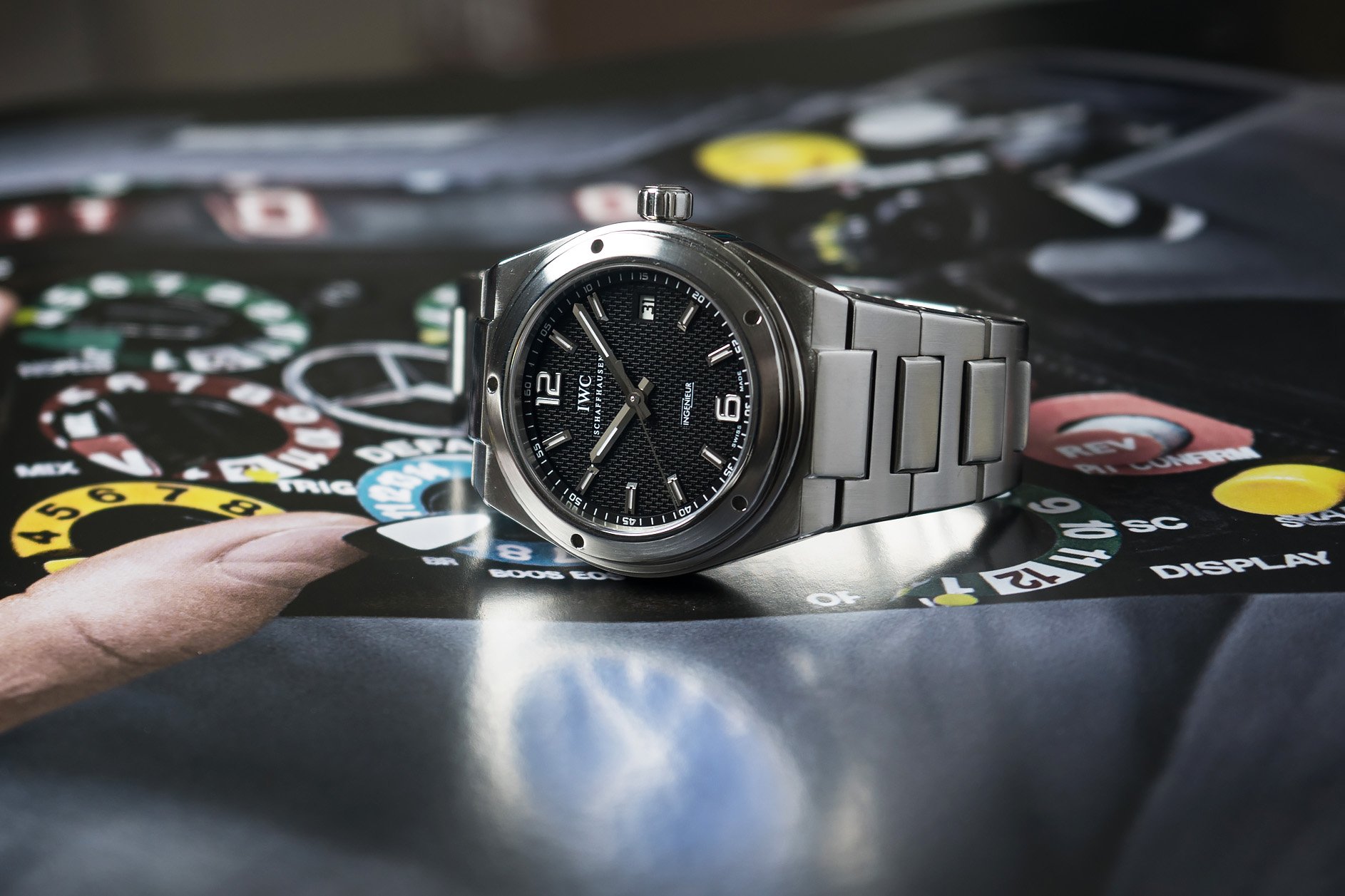
Image: WatchWorks Haarlem
IWC Ingenieur ref. 3227
Genta’s Ingenieur and the iterations that followed it were far from great commercial successes. The quick rise in popularity of quartz watches turned out to be a big issue for IWC in selling the Ingenieur. While smaller 32mm and 34mm versions of the Ingenieur stayed in production until roughly 2000, the bigger Ingenieur models were phased out in the early 1980s. It took until 2005 for IWC to introduce a new Ingenieur to continue the legacy of the famous ref. 1832. That’s when the brand introduced the ref. 3227, much to the delight of the Ingenieur fans. The watch introduced a bigger 42mm case that was also rather chunky at 14.5mm thick. And on the stainless steel bracelet, it was a heavy watch too. But it was a well-designed new Ingenieur that respected the past gracefully.
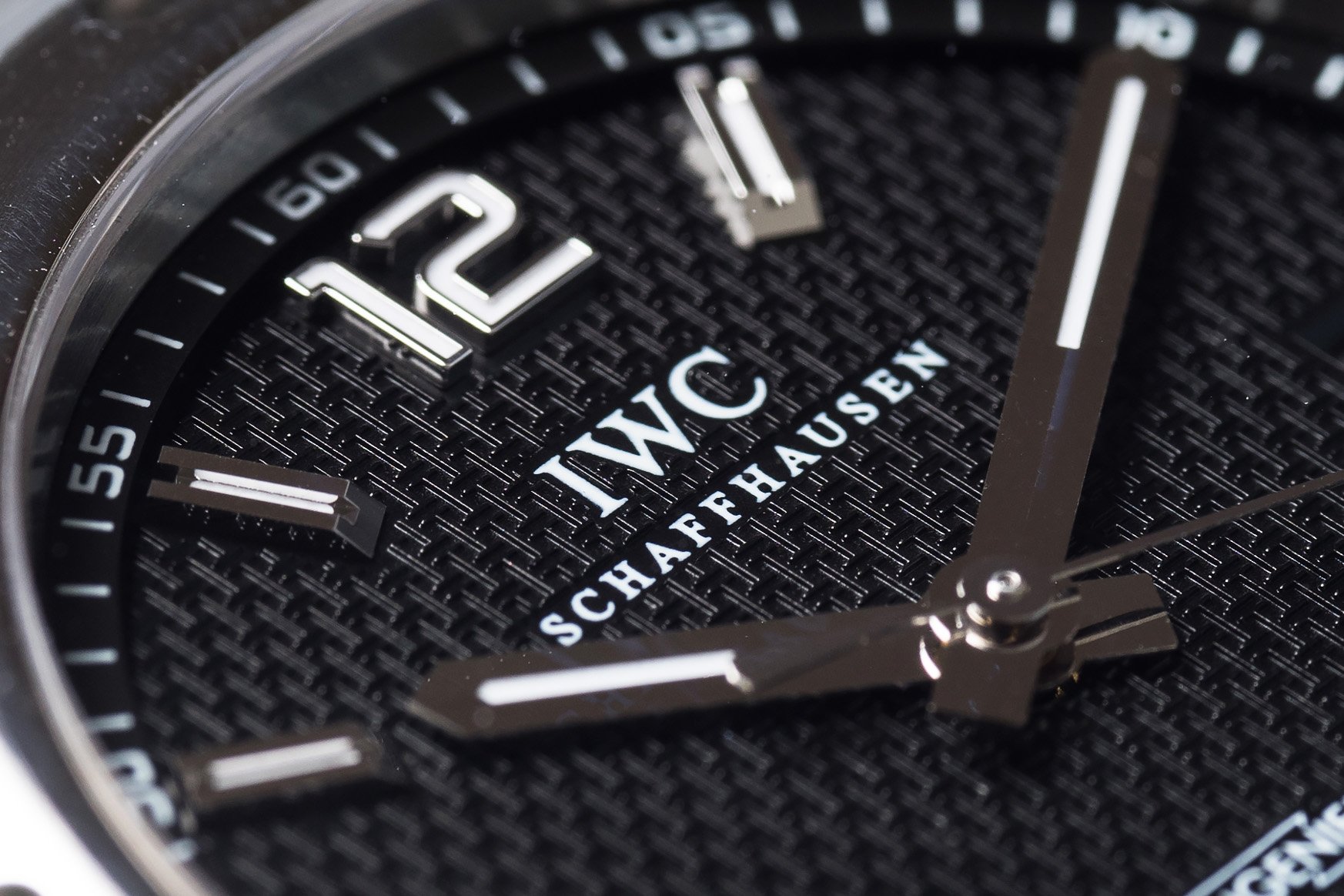
Image: WatchWorks Haarlem
The dial featured a texture inspired by the classic graph paper structure. The dial still looks amazing today and has a tremendous depth to it. Additionally, IWC brought back the 12 and 6 numerals of the original ref. 666. And, of course, the lower half of the dial featured the Ingenieur logo. Inside the chunky case, IWC equipped the watch with the in-house caliber 80110. This automatic movement operates at 28,800vph and has a 44-hour power reserve. When it comes to dial colors, the watch came standard with a black dial with white printing.
Different dial colors for the limited editions
But IWC also created a small number of spectacular limited editions. The ref. IW322705 is a limited edition for the IWC Collectors’ Forum with a special anthracite dial and engraved back. And for the Japanese market, IWC created 200 pieces with a salmon dial that also looks stunning. These two versions easily fetch €10K nowadays. The regular black-dial version goes for roughly between €4.5K and €7.5K. For that money, you will get the Ingenieur that continued the legacy of Genta’s version in a modern way.
Despite its bigger size and chunky case, this is still a great piece that was important in keeping the Ingenieur name alive for the four years it was in production. IWC did create the smaller 40mm ref. 3228 in 2008 that came with the in-house caliber 80111. That version was produced in a limited run of 600 pieces with a white dial and rose gold details. While I am not the biggest fan of the color combination of the dial and the hands and indices, it is a perfect size and thinner at 13.5mm. This is what the Ingenieur could have been and maybe should have been when it was revived in 2005.
IWC Ingenieur SL “Jumbo” Quartz ref. 3303
We could have gone for multiple watches for our final pick. But the one special piece that I think is highly underrated is the IWC Ingenieur SL “Jumbo” Quartz ref. 3303. Together with the mechanical ref. 1832 SL “Jumbo,” IWC also released a quartz version of the Ingenieur with ref. 3003 in 1976. Other than the movement, it was the same watch because the case design allowed for either a mechanical or a quartz movement. Some Ingenieur owners swapped their mechanical movement for a quartz version, which was impossible with the second-generation quartz Ingenieur ref. 3303. IWC decided to update the movement to the much slimmer IWC quartz caliber 2250, which was, essentially, a renamed ETA 955.112.
As a result, IWC had to update the case and dial design, and the brand did that perfectly. The overall balance in the design of the dial and the bezel was optimized. Additionally, IWC redesigned the bracelet to look slightly more refined. Essentially, it is a slimmer and better version of Genta’s design. Between 1980 and 1985, IWC produced only 369 pieces of the IWC Ingenieur SL Quartz. Of those 369 pieces, 149 were produced in steel. An additional 160 were produced in steel and gold, with another 56 in full yellow gold and four in yellow gold with diamonds. So it’s a rare piece that you don’t see a lot. But the steel version goes for a lot less than the original ref. 1832. It makes sense as it is quartz and not an original Genta design. Nevertheless, it is a thing of great beauty that goes for roughly between €10K and €17K.
Honorable mentions
When it comes to the Ingenieur, some so many more models are worth checking out. The first is the ref. 3239 from 2013. It was the successor to the ref. 3227 that I talked about earlier. It came with a 40mm case that was only 10mm thick, making it a great follow-up to the previous version that had better proportions. But when it came to the dial, IWC steered away from a graph-paper-inspired pattern and presented the ref. 3239 with a much simpler dial that does not have the same impact. On top of that, the brand resorted to a reworked ETA 2892-A2 to make sure it fit the case. This doesn’t make it a bad watch, but it’s not as impactful as the other models on this list.
The last honorable mention goes to the Ingenieur Officially Certified Chronometer ref. 3521. This model was produced between 1993 and 2000 and was a follow-up to the series of smaller Ingenieurs from the 1980s with slimmer cases that collectors also call the “Skinny Ingenieurs.” The first “Skinny Ingenieur” was the ref. 3305 that featured a smaller 34mm case than the ref. 3303, which I just talked about. This ref. 3521 from the 1990s also featured a 34mm case that was only 8.8mm thick. So if you can pull off a smaller watch, this might be a very good option, especially knowing that IWC turned to Jaeger-LeCoultre for the caliber 887/2. It is based on the JLC 889/2 but gilt with blued screws, and it came equipped with a platinum rotor weight. It truly is a stunner that can be yours for between €5K and €10K.
Final thoughts
There you have it — seven great IWC Ingenieur watches that are part of the bigger Ingenieur family. Writing this article made me realize once again that there is so much more to the Ingenieur history than we tend to think, and a new chapter has now been added with the latest Ingenieur. But we realize that you might not agree with all the picks for this list. That’s why we would love this to be the start of a bigger discussion. In the comments section below, let us know your picks for the most relevant references in the development of the IWC Ingenieur. We will see you next week for another Top 5 list of references for a different classic watch.
For more information on the current Ingenieur, visit the official IWC website.

